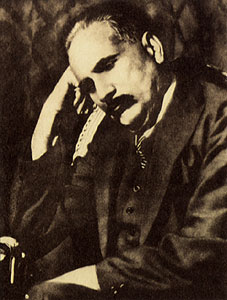History
Sialkot District was an agricultural region with forests during the Indus Valley Civilization. The Vedic period is characterized by Indo-Aryan culture that flourished in the Punjab region. The Kambojas, Daradas, Kaikayas, Madras, Pauravas, Yaudheyas, Malavas and Kurus invaded, settled and ruled the ancient Punjab region. After overrunning the Achaemenid Empire in 331 BCE, Alexander marched into the present-day Punjab region with an army of 50,000. The Sialkot was ruled by Maurya Empire, the Indo-Greek kingdom, Kushan Empire, Gupta Empire, White Huns, Kushano-Hephthalites, the Arabs and Hindu Shahi kingdoms.
In 997 CE, Sultan Mahmud Ghaznavi took over the Ghaznavid dynasty empire established by his father, Sultan Sebuktegin, In 1005 he conquered the Shahis in Kabul in 1005 CE and followed this by the conquests of the Punjab region. The Delhi Sultanate and later Mughal Empire ruled the region.
At an early date the District fell to the Mughal Empire, and under the Mughals formed the Rechna Doab sarkar of the Subah of Lahore. Under Shah Jahan the sarkar was entrusted to Ali Mardan Khan, the famous engineer, who dug a canal through it to bring water from the Chenab river to the imperial gardens in Lahore.
On the decline of the Mughal Empire Ranjit Singh Deo, a Rajput hill chief, extended his sway over the lowlands, owning a nominal allegiance to Delhi. In 1748 he transferred his allegiance to Ahmad Shah Durrani, who added Zafarwal and two other parganas to his fief. Before his death in 1773 Ranjit Deo had secured possession of the whole District, except the Sialkot town and its dependencies, which were held by a Pashtun family. [8] Sialkot district was annexed by the British from its former Sikh rulers after the Second Anglo-Sikh war of 1848–1849. [9]
During the Indian Rebellion of 1857 the station was denuded of British troops; and the Native regiments which were left behind the rose, and, after sacking the jail, treasury, and courthouse, and massacring several of the European inhabitants, marched off towards Delhi, only to be destroyed by Nicholson at Trimmu Ghat. The rest of the Europeans took refuge in the fort, and on the morning after the departure of the rebels order was restored. The only events of interest in the subsequent history of the District are the plague riots that occurred at the villages of Shahzada and Sankhatra in 1901. [8]
Numerous mounds are scattered about the District, which marks the sites of ancient villages and towns. None of them, except that on which the Sialkot fort stood, has been excavated, but silver and copper utensils and coins have been dug up from time to time by villagers. Most of the coins are those of Indo-Bactrian kings. The excavations in Sialkot revealed the existence of some old baths, with hot-water pipes of solid masonry. The fort itself, of which very little now remains, is not more than 1,000 years old and is said to have been rebuilt by Shahab-ud-din Ghori at the end of the twelfth century. [8]
In 1859, Gurdaspur, Amritsar and Sialkot were placed in the new division of Sialkot. But in 1884, Gurdaspur along with Amritsar again became a part of the Lahore Division.
According to the 1901 census, the district had a population of 1,083,909 and contained 7 towns and 2,348 villages. The population at the previous three enumerations was: 1,004,695 (1868), 1,012,148 (1881) and 1,119,847 (1891). The population decreased between 1891 and 1901 by 3.2, [8] the decrease being greatest in the Raya tahsil and least in the Daska tahsil. The Chenab Colony was responsible for this fall in population, with no less than 103,000 persons having left to take land in the newly irrigated tracts. [10]
The district was subdivided into five tehsils, namely: Sialkot, Pasrur, Zafarwal, Raya and Daska, the headquarters of each being at the place from which it is named. The chief towns of the district were Sialkot, Daska, Jamki, Pasrur, Kila Sobha Singh, Zafarwal and Narowal. [10]
| Tehsil | Area (sq mi) | Towns | Villages | Population (1901) | Population per sq mi | Population variation 1891–1901 | Number of literate people |
|---|
| Sialkot | 428 | 1 | 637 | 312,668 | 730.5 | +3.2 | 12,101 |
| Pasrur | 394 | 2 | 443 | 193,746 | 491.7 | −5.0 | 5,601 |
| Sambrial | 485 | 1 | 456 | 192,440 | 396.8 | +10.4 | 5,586 |
| Daska | 360 | 2 | 332 | 206,148 | 572.6 | −0.6 | 4,103 |
| Total | 1,991 | 7 | 2,348 | 1,083,909 | 544.4 | −3.2 | 31,341 |
In 1930, the tehsils of Raya, Daska and Pasrur were split up and parts of these were amalgamated into Gujranwala District. In 1991, the tehsils of Narowal and Shakar Garh (which was tehsil Shankar Garh of Gurdaspur district before the independence of Pakistan in 1947) were split up and formed into the new Narowal District.





